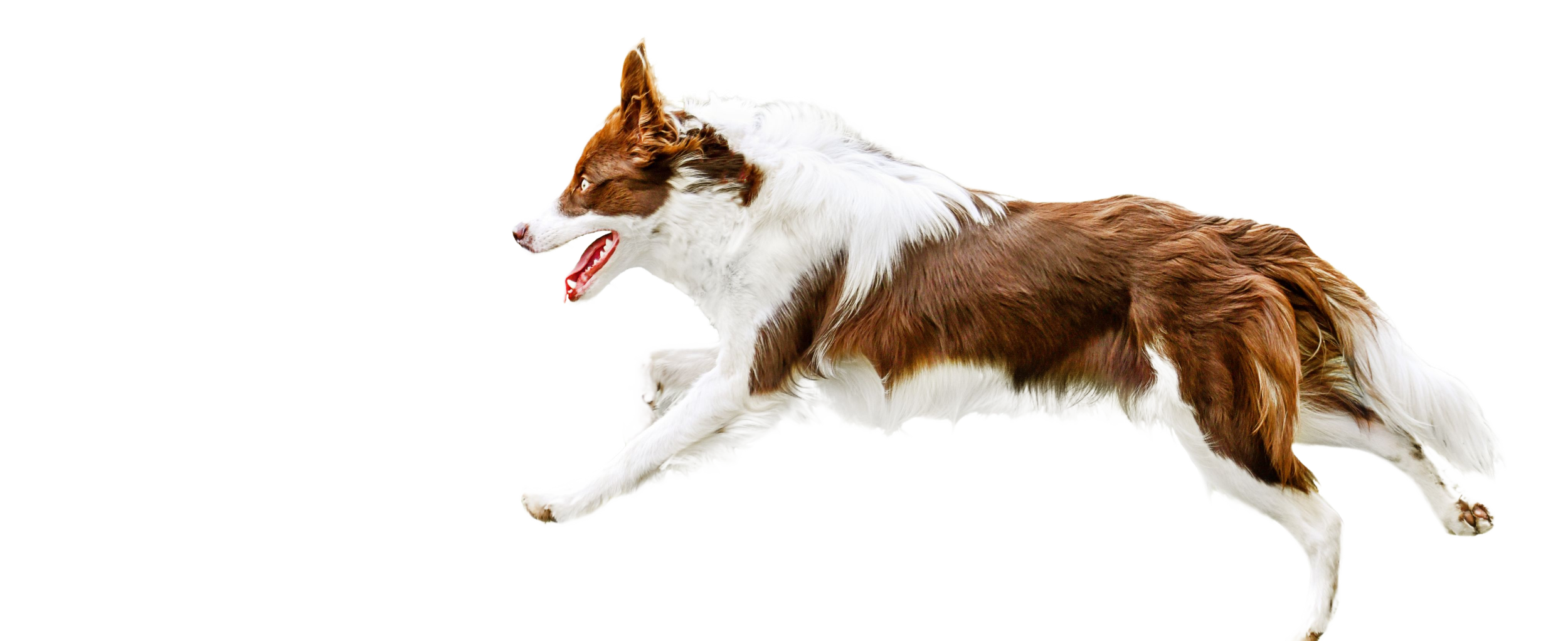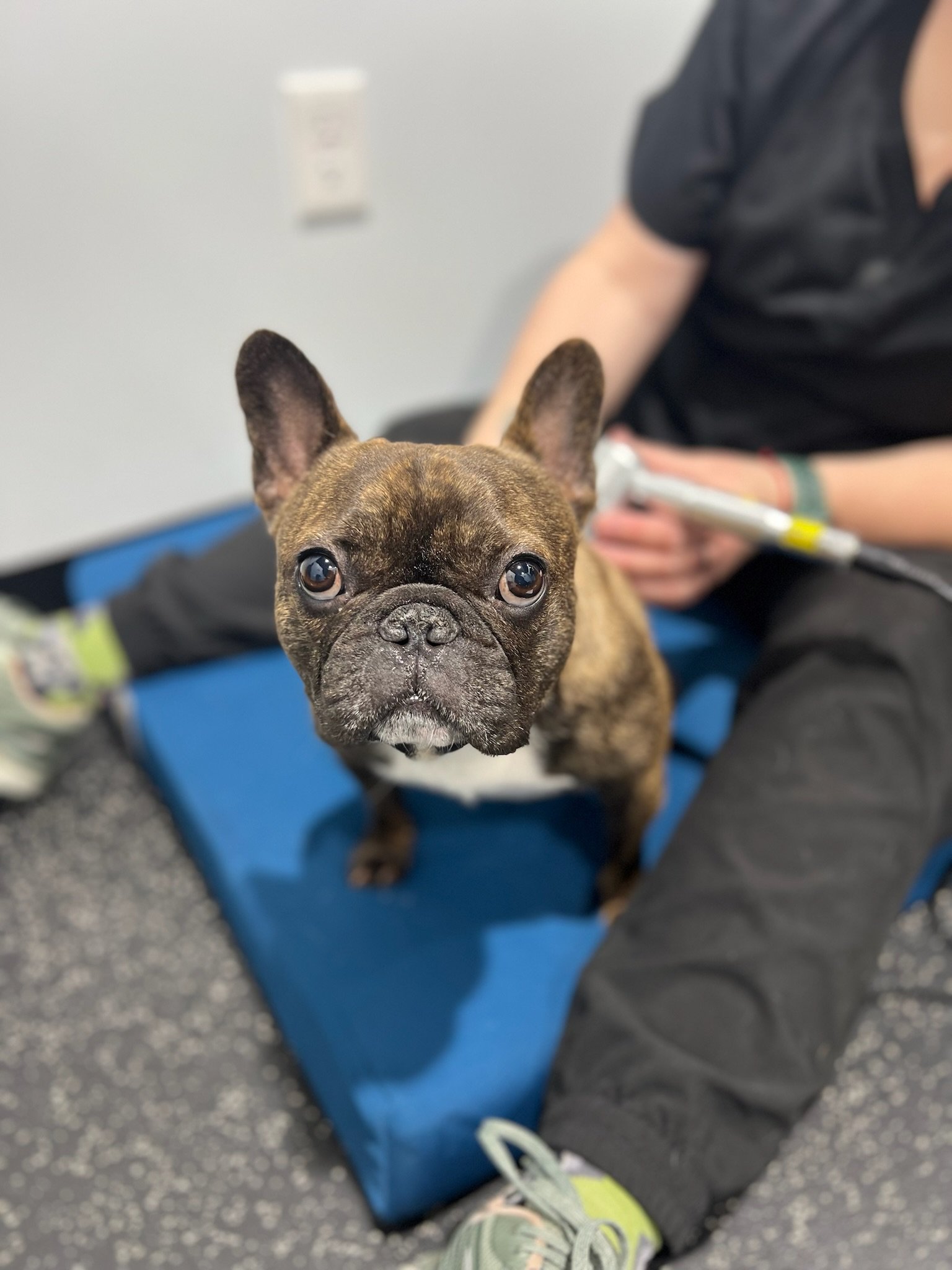
Laser Therapy
Therapeutic laser, also known as cold laser, low level laser therapy (LLLT), or photo-biomodulation therapy (PBMT), is the use of focused wavelengths of light to encourage tissue repair and relieve pain. It is used as part of a comprehensive rehabilitation plan to improve mobility and aid in recovery after injuries or surgeries.
Some benefits and common uses for laser therapy are:
Pain relief: Laser therapy helps alleviate pain caused by conditions like arthritis, joint pain, and post-surgery discomfort.
Inflammation reduction: The laser's energy can target and reduce inflammation, helping with conditions such as swelling and inflammation from injuries.
Wound healing: Laser therapy promotes faster healing of wounds, cuts, and surgical incisions.
Muscle and joint conditions: Laser therapy can help manage muscle strains, sprains, and chronic conditions like hip dysplasia.
Nerve regeneration: Laser therapy can help stimulate damaged nerves, aiding in nerve regeneration and reducing neuropathic pain.
Laser Therapy FAQ
-
Laser therapy, now known as photo bio-modulation, is a non-invasive treatment that uses focused wavelengths of light to stimulate healing and reduce pain in animals. It helps in physical rehabilitation by promoting tissue repair and reducing inflammation.
-
The laser device emits a specific wavelength of light that penetrates deep into the tissues. This light energy interacts with cells, promoting cellular metabolism and increasing blood flow to the treated area. This helps in reducing pain, swelling, and promoting healing.
-
Laser therapy can be effective in treating a wide range of conditions in pets such as:
Arthritis: Laser therapy can provide relief for animals suffering from arthritis, a common condition in older or geriatric pets. The laser's energy helps reduce inflammation in the joints, alleviating pain and improving mobility. It can also promote the production of endorphins, the body's natural painkillers, providing long-lasting relief.
Musculoskeletal injuries: Whether it's a sprain, strain, or soft tissue injury, veterinary laser therapy can aid in the healing process. The laser stimulates cellular activity, increasing blood circulation to the injured area. This promotes tissue repair, reduces swelling, and accelerates the recovery of muscles, tendons, and ligaments. Examples of soft tissue injuries treated with laser therapy are iliopsoas strains or tears, biceps tendinopathy or tendinitis, supraspinatus tendinopathy, achilles tendonitis, etc.
Wound healing: Laser therapy is effective in promoting faster wound healing in animals. The laser's energy enhances cellular metabolism and stimulates the production of collagen, a protein essential for wound repair. It also helps to increase blood flow to the injured area, supplying oxygen and nutrients necessary for healing.
Post-surgical recovery: After undergoing surgery, animals may experience pain, inflammation, and limited mobility. Veterinary laser therapy can be used as a post-operative treatment to reduce these issues. By targeting the surgical site, the laser helps to minimize pain, accelerate tissue healing, and enhance the overall recovery process.
Nerve damage: Animals with nerve damage, such as peripheral neuropathy or nerve entrapment, can benefit from laser therapy. The laser's energy stimulates nerve regeneration and helps to restore proper nerve function. It can also alleviate nerve-related pain and improve the animal's quality of life.
Pain management: Veterinary laser therapy provides a non-invasive, drug-free option for managing pain in animals. It can be used for chronic pain conditions like osteoarthritis or acute pain resulting from injuries or surgeries. The laser stimulates the release of endorphins, which act as natural pain relievers, offering long-lasting pain relief.
Edema and swelling: Laser therapy can help reduce edema (excessive fluid accumulation) and swelling in animals. The laser's energy improves lymphatic drainage, reducing fluid build-up and promoting faster resolution of swelling.
-
Yes, veterinary laser therapy is considered safe for animals. The laser is non-invasive, painless, and does not require any medications or sedation. It has minimal side effects and is well-tolerated by most animals. Like most things, there are contraindications (or reasons that we would not choose laser therapy) so it is best to consult a veterinarian trained in laser therapy.
-
The number of laser therapy sessions required depends on the condition being treated and the individual animal's response. Typically, a series of sessions is recommended, ranging from 4 to 10 treatments. The frequency of sessions may be higher initially and then spaced out as the animal progresses.
-
The response to laser therapy can vary among animals. Some pets may show improvement after just a few sessions, while others may take longer. It's important to be patient and consistent with the recommended treatment plan to achieve the best results.
-
Laser therapy is often used as part of a comprehensive treatment plan in veterinary physical rehabilitation. It can complement other modalities such as medication, exercise, or acupuncture. Your veterinarian will determine the most appropriate treatment approach based on your dog or cat’s specific needs.


